Vegetable Hakka Noodles is a delicious flavourful Indo-Chinese recipe made by stir frying noodles with crunchy colourful veggies like cabbage, carrots, bell peppers & lip-smacking sauces. It is vegan, vegetarian, easy to make & comes together in just 20 minutes.
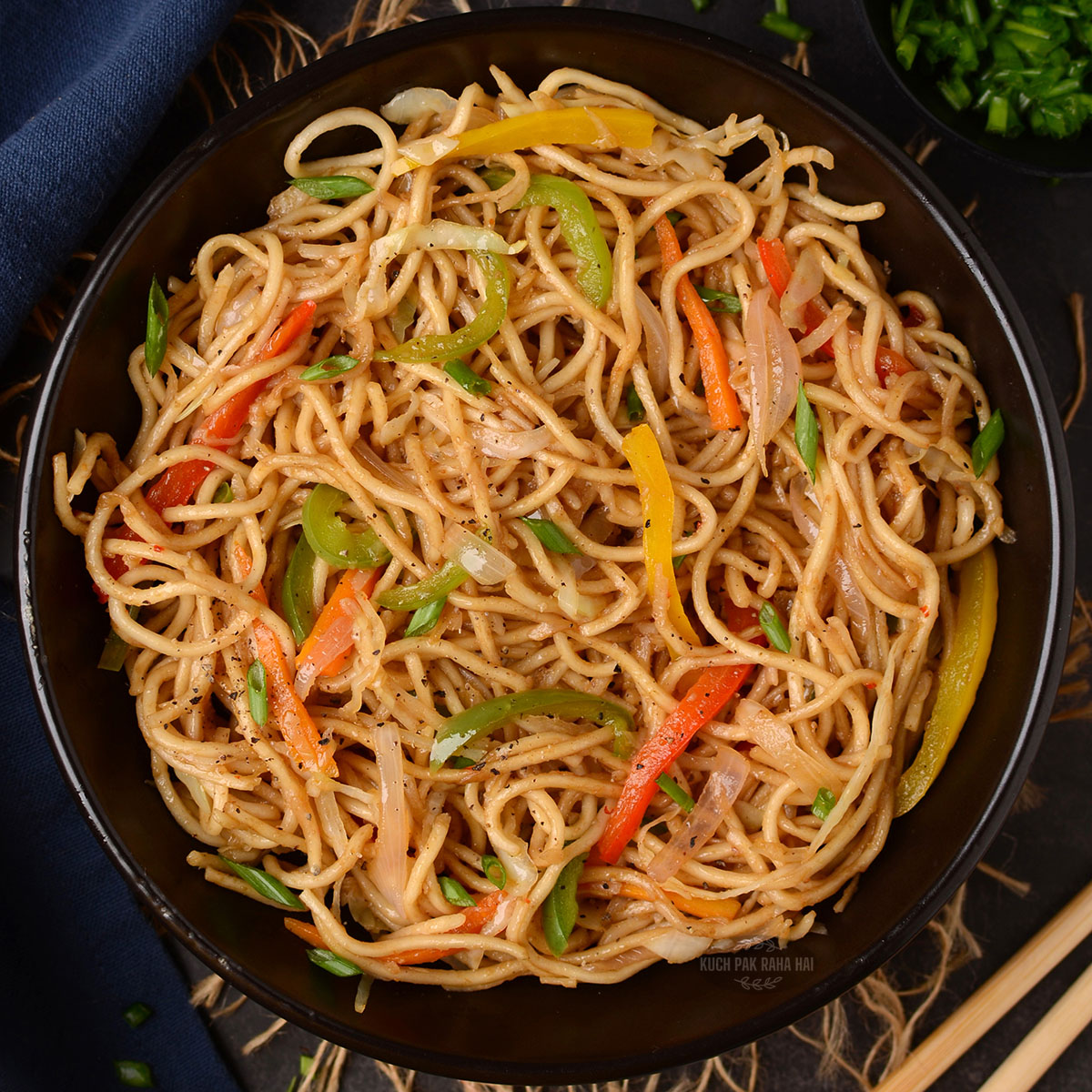
These scrumptious veggie-loaded noodles are a great option for quick lunch, dinner meal or when you are craving for some Chinese style takeaway. They can be enjoyed on their own or paired with other dishes like veg manchurian, chilli panner or gobi manchurian etc.
Hakka Noodles Meaning:
Hakka noodles are almost like Indianised version of Chinese food & hence often referred to be part of Indo-chinese cuisine. This type of cuisine came into origin after the Chinese Hakka immigrants migrated to Kolkatta, which led to their recipes eventually getting modified to suit Indian palate.
In India, many roadside food carts or local food joints sell its spicier bolder version by the name ‘chow mein’. In addition to spices & sauces, some even use MSG (monosodium glutamate) for added flavour.
The recipe is flexible as you can use veggies of choice or add protein of choice like paneer, tofu, tempeh or plant based chicken. The trick here is to use correct type of noodles and veggies and not to overcook them at any step.
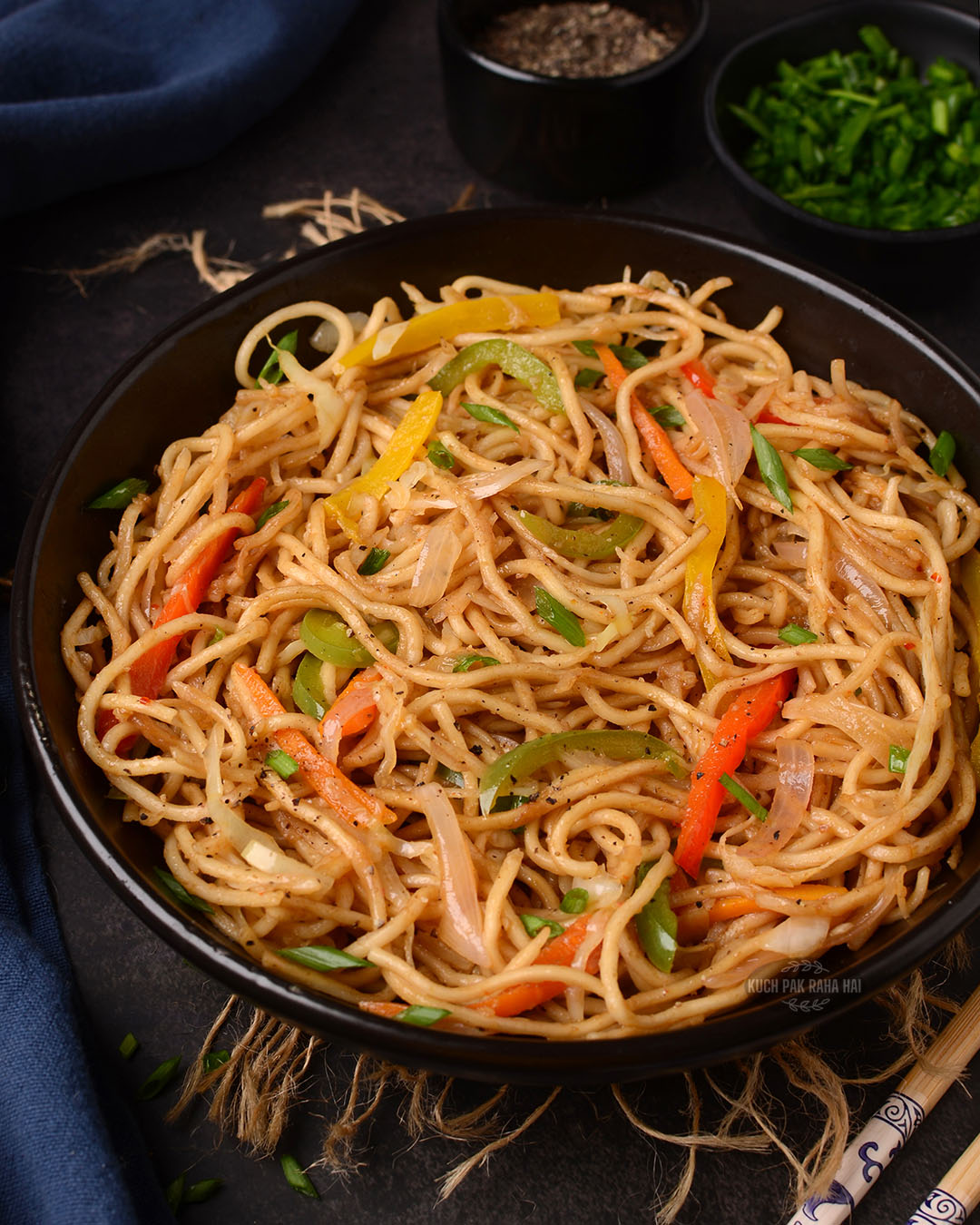
To make these tasty hakka noodles at home you will need following ingredients:
Noodles: I have used Ching’s Hakka noodles here but you can use any brand of your choice. If you want to keep the recipe healthy-ish, then go for whole wheat or millet noodles. To make the recipe gluten free, opt for gluten free noodles like rice noodles.
Please make sure to follow the instructions & timings for cooking the noodles as mentioned on its packet as each brand or variety has slightly different time for cooking depending on its composition.
To get perfect no-sticky texture of noodles-
- Always cook them al-dente, which means they should have a slight bite. Overcooked Noodles turn mushy and break into smaller pieces on tossing with vegetables.
- Rinse them with cold water or under running water to stop their cooking any further.
- Tossing them in some oil makes a huge difference as it prevents their clumping on cooling down.
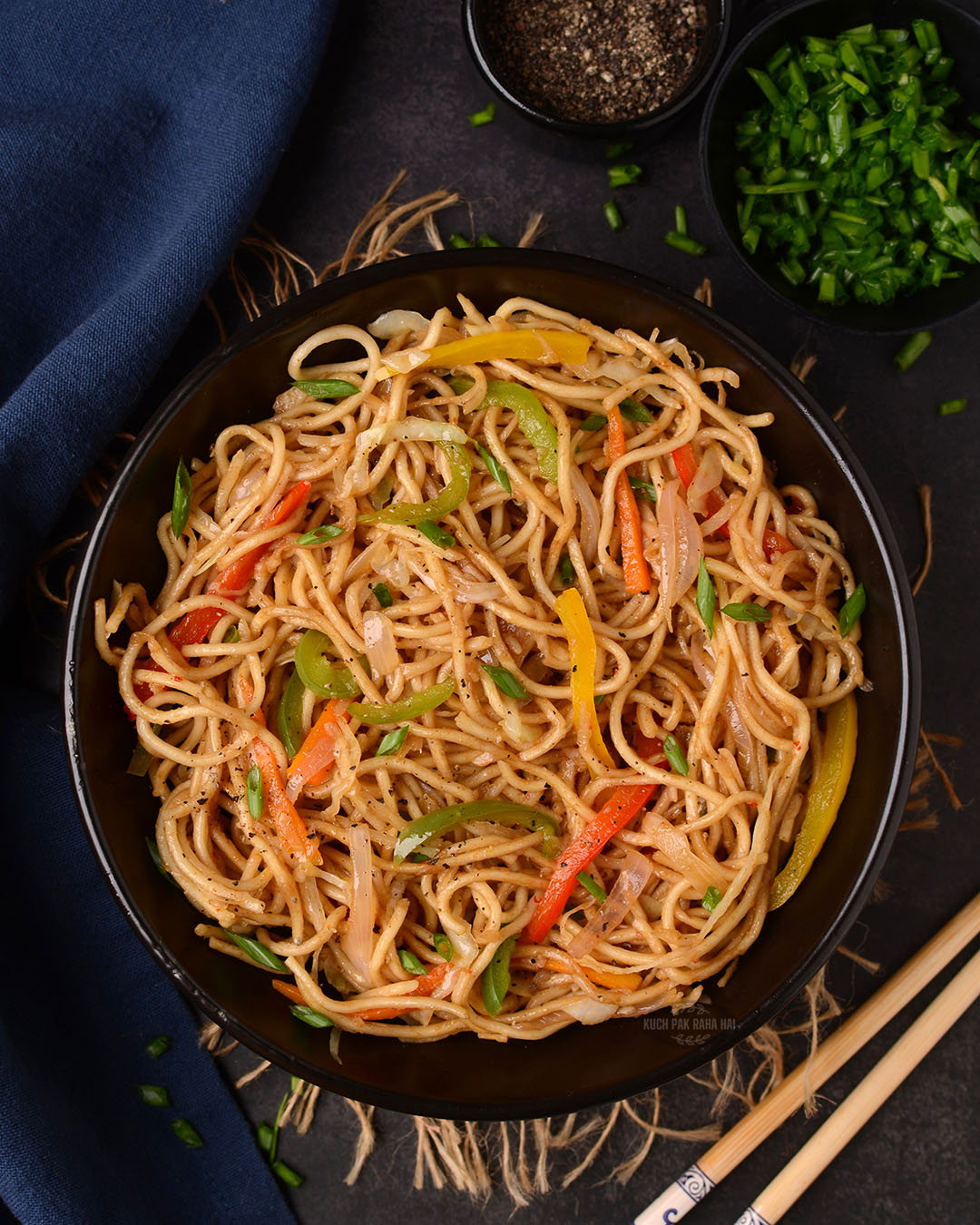
Vegetables: I love adding lots of colourful fresh veggies to these noodles like green cabbage, purple cabbage, carrots, capsicum, coloured bell peppers. You can always pick veggies of your choice OR adjust their quantities as per your liking.
Veggies like mushrooms, baby corn or broccoli can easily be included in this noodle recipe. The main point is not to overcook the vegetable as we want to maintain their crunch.
Always do the chopping in advance as once you begin the sautéing process it barely takes 8-10 minutes for the entire dish to be ready. All veggies should be thinly sliced for even cooking time.
Aromatics: Ginger, garlic and some spring onion greens add wonderful aroma to hakka noodles. If you like spicy food, some finely chopped deseeded green chillies can also be used with ginger-garlic. Instead of spring onion greens, you can also use scallions or chives.
Sauces & spices: The hakka noodles get their flavour from different sauces like soy sauce, red chilli sauce, vinegar, ketchup (optional) and some freshly crushed black pepper. As sauces already have salt, add little salt in beginning and adjust it later after taste test.
If you want to keep recipe gluten free, then apart from using gluten free noodles use tamari instead of soy sauce.
Oil: As veggies and noodles are to be tossed on high heat, try to use oil which can withstand high temp. like sesame oil, sunflower or peanut oil etc.
Type of Pan to be used:
Always try to use a large pan with heavy base (or even better if you have wok) for making hakka noodles. The size should be large so that veggies and noodles can be tossed properly in it. The base needs to be heavy as the entire cooking and sautéing is supposed to be done on high heat. If you are using cast iron pan, make sure it is well seasoned.
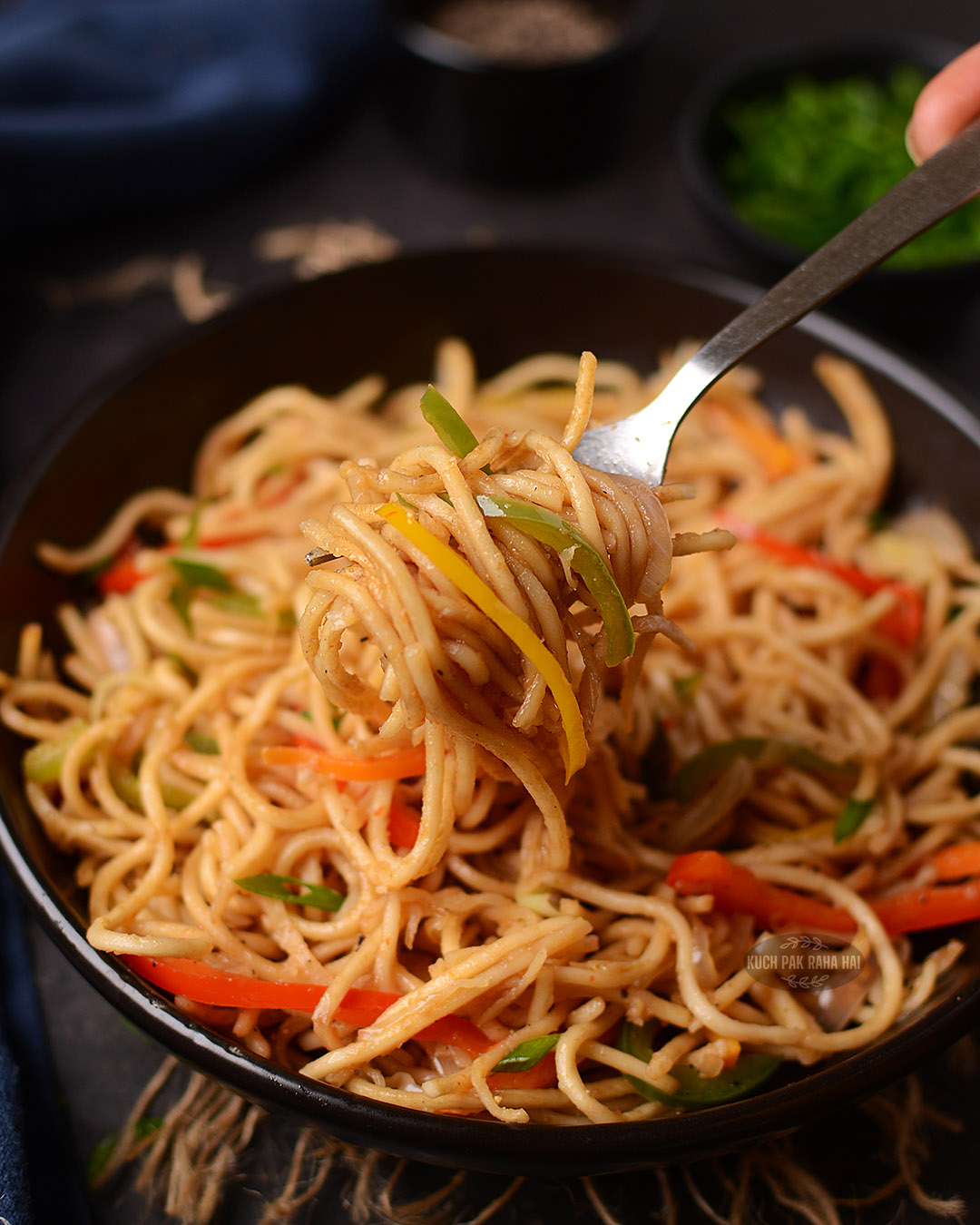
- Prep Time: 10 minutes
- Cook Time: 10 minutes
Ingredients (Served 2):
- Hakka Noodles (uncooked)- 150 gms (5 oz)
- Water- 5 to 6 cups (for boiling noodles)
- Sesame Oil (or any cooking oil)- 1 tbsp + 2 tsp (divided)
- Ginger (minced)- 1 tsp
- Garlic (minced)- 3 to 4 cloves
- Onion (sliced)- 1 medium
- Coloured Bell Peppers (thinly sliced)- 3/4 cup
- Carrots (julienned)- 1/3 cup
- Cabbage (shredded)- 1 cup
- Soy Sauce- 1+1/2 tbsp
- Red Chilli Sauce / Sriracha- 1/2 tbsp (to taste)
- White Vinegar (or Rice Vinegar)- 2 tsp
- Crushed Black Pepper- 1/2 tsp (to taste)
- Salt- 1/2 tsp (to taste)
- Scallions (or Spring Onion Greens)- 2 to 3 tbsp
Directions:
Step 1:
Add 4-5 cups water in a deep pan or pot and bring it to rolling boil. Add noodles to it and cook as per the instructions on packaging. Once they soften up, separate them using tongs or fork.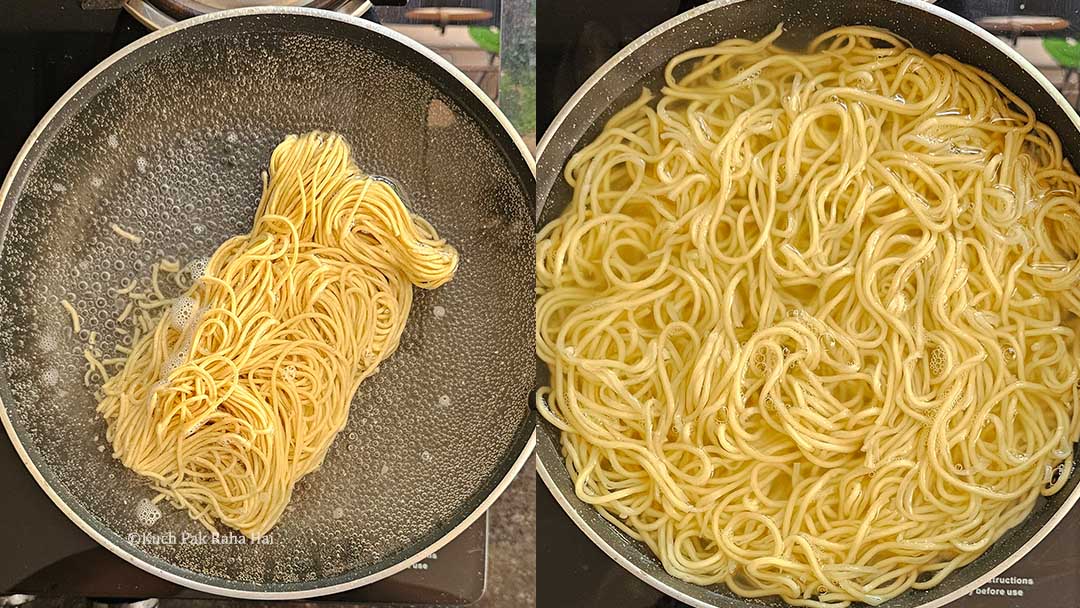
Step 2:
Drain these boiled noodles on a colander and rinse under running water. Spread them on a plate and drizzle 2 tsp oil on them and gently mix or toss to coat all noodles. This prevents the noodles from clumping. Keep them aside.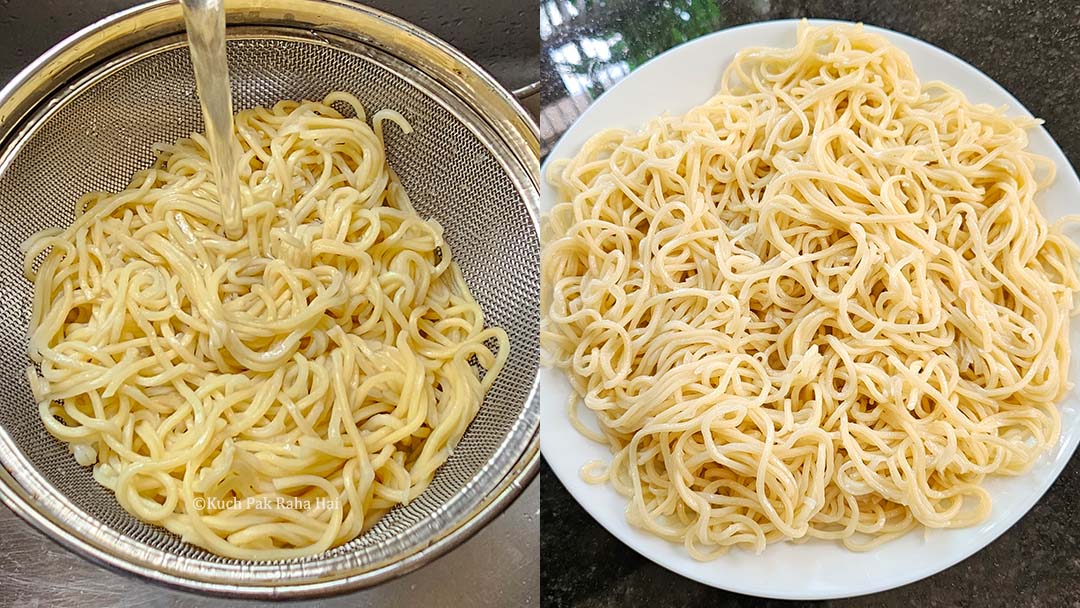
Step 3:
Heat oil in a wok or heavy base pan (the entire cooking will be done on high flame). Add ginger garlic and sauté for 15-20 seconds. Add sliced onions and sauté for 30 seconds while stirring in between.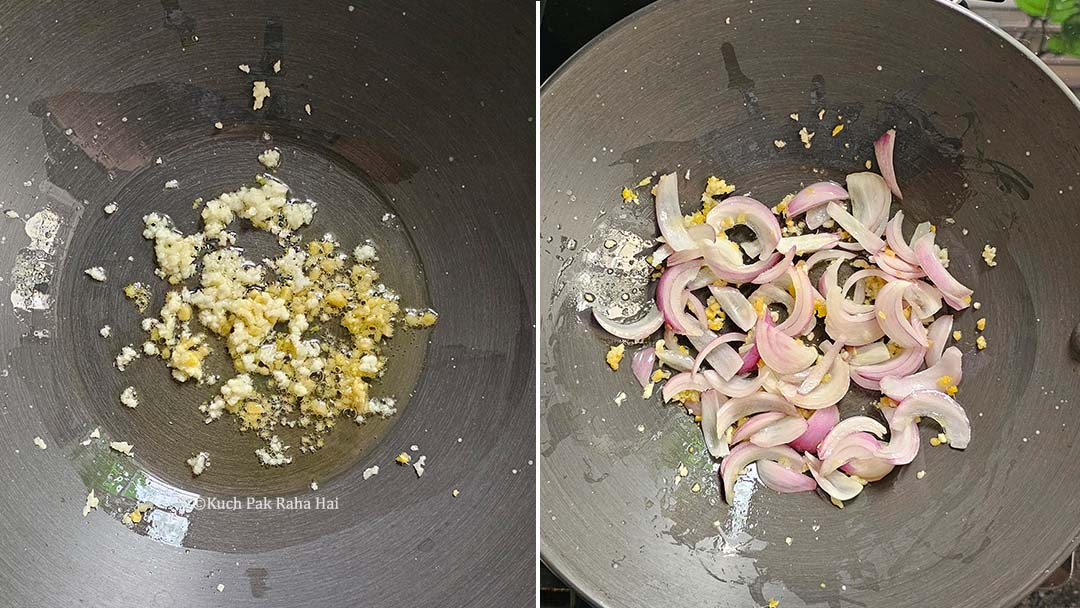
Step 4:
Add bell peppers, carrots and sauté for another 30-40 seconds. Add in sliced cabbage and sauté for 50-60 seconds while stirring or tossing the wok in between.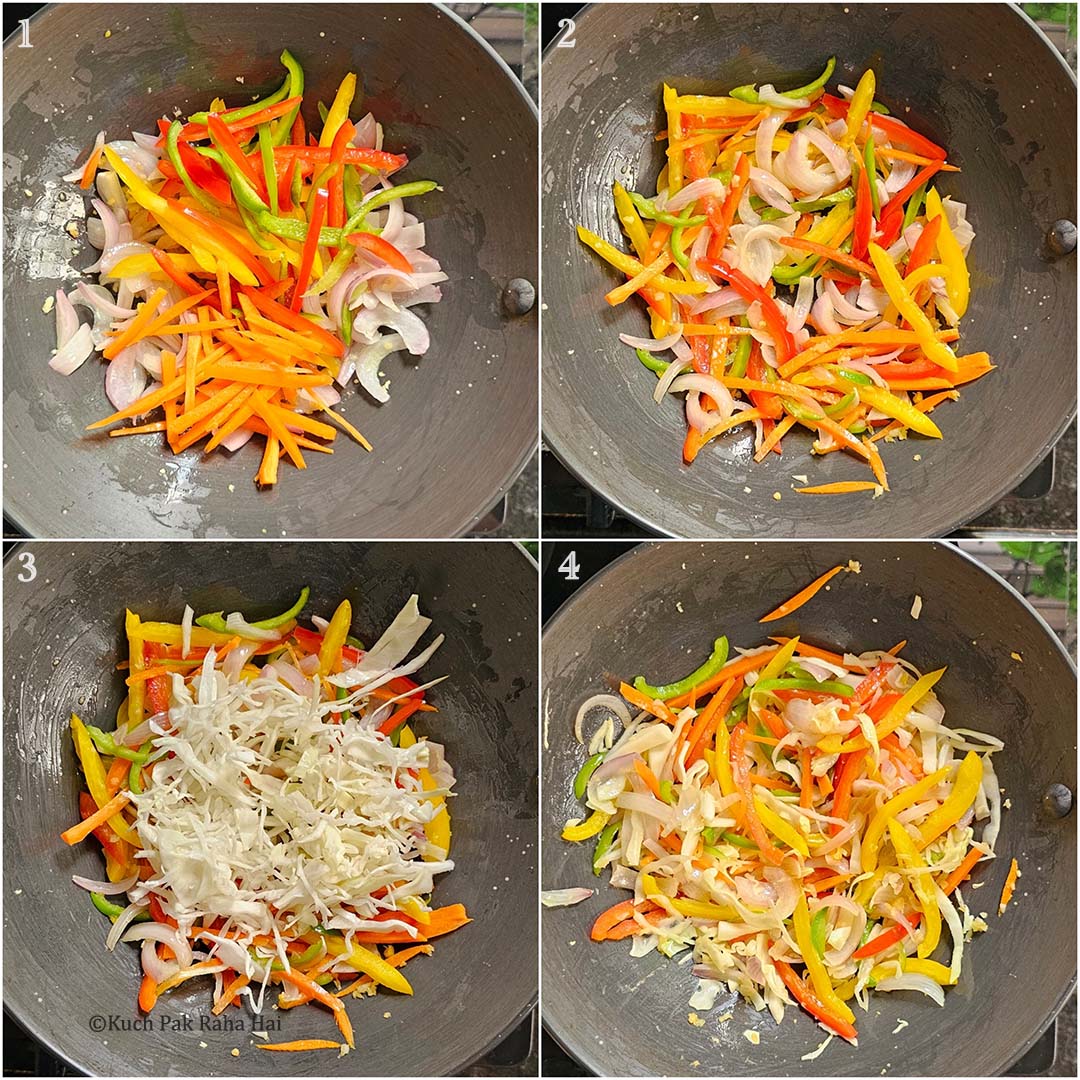
Step 5:
To these sautéed veggies, add boiled noodles, sauces (soy sauce, vinegar, chilli sauce), black pepper and 1/2 tsp salt.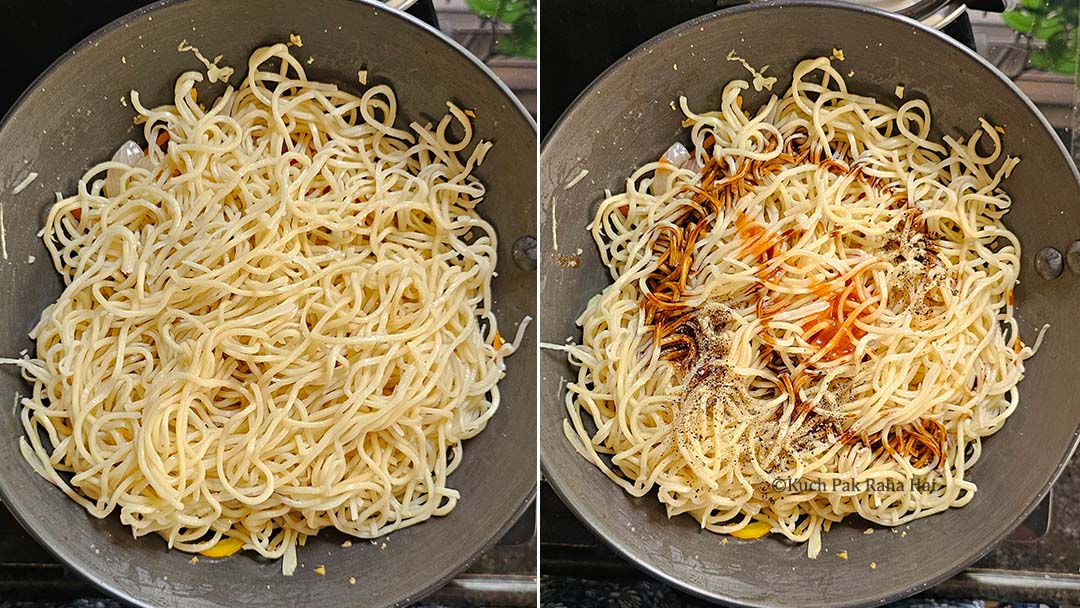
Step 6:
Toss or mix using tongs (or 2 forks) till all ingredients are combined evenly (As sauces already have salt, taste & then add more salt if required). Mix once again. Garnish with spring onion greens or scallions before serving.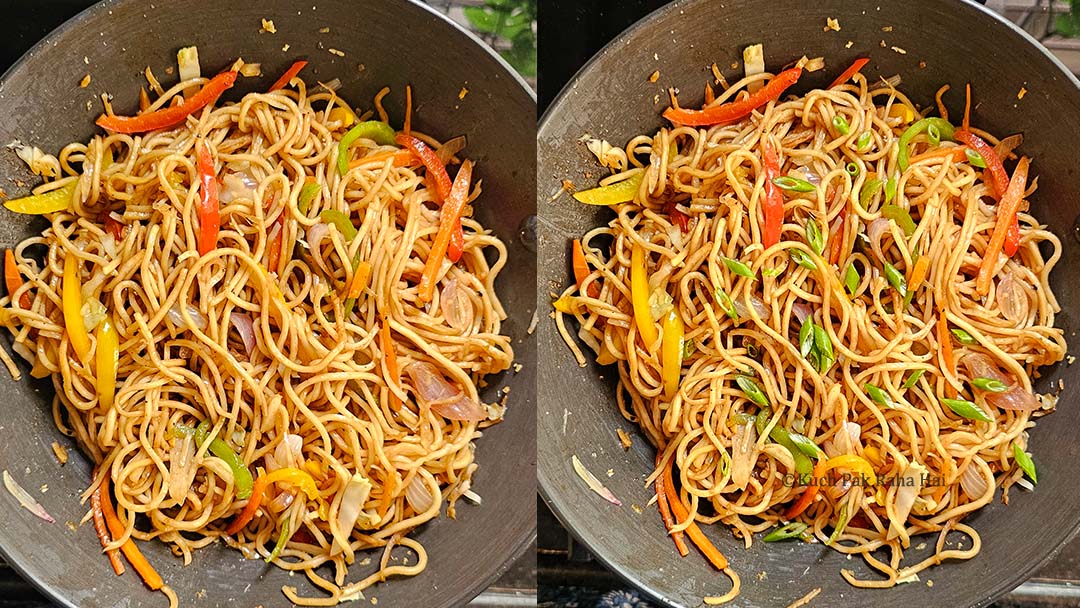
Serving Suggestion:
You can enjoy them as it is or serve with manchurian, chilli paneer gravy or sweet sour tofu.
Tips:
- I have used Chings Hakka Noodles here. You can use any brand of your choice, just follow the cooking timings as mentioned in the instructions on packet.
- Rinsing the noodles with cold water stops further cooking so please do not skip this step.
- Do not overcook the veggies as they will otherwise loose their crunch and become too soft.
- You can store any leftover noodles in airtight container in fridge for 1-2 days. For reheating, add a splash of water and microwave for 1-2 minutes.
Pin for later: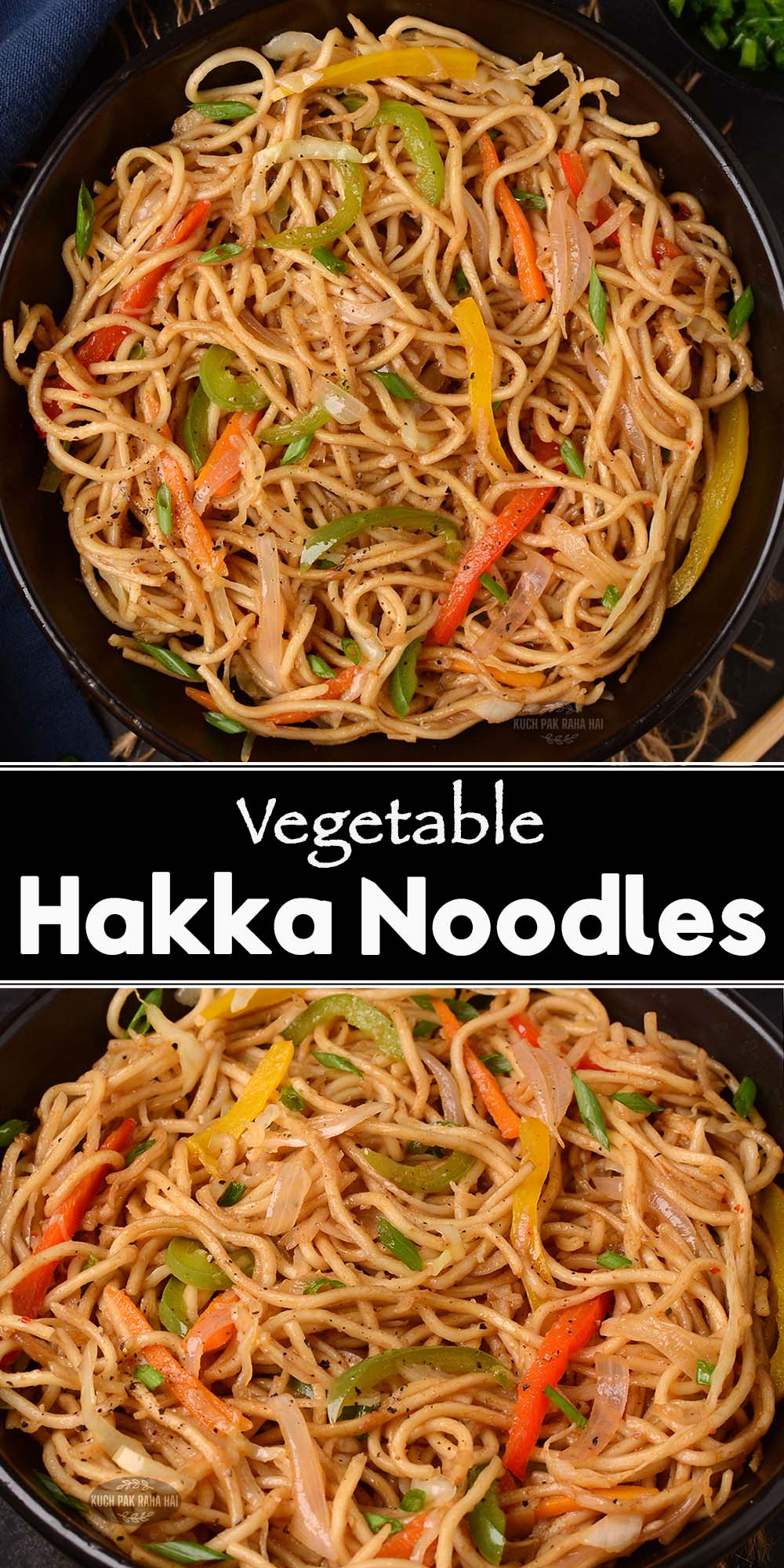
More asian style recipes:

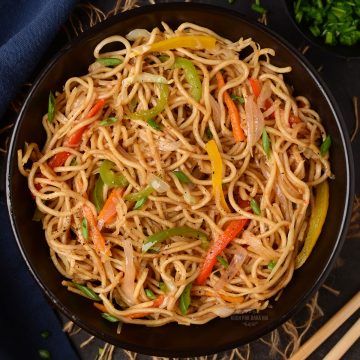

Leave a Reply